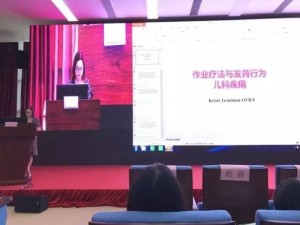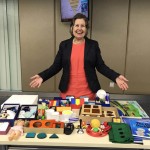
Dr. Sophie Westwood, Clinical Psychologist, LIH Olivia’s Place Shanghai
Narrative therapy is an approach that I regularly consider and apply in my clinical work with children, young people, their families, others involved in their education and community, and adults. I was first introduced to this approach during my clinical training at the University of Surrey in the UK, and it was my experiences working in Shanghai that led me to want to get to know it a little better. Working as a British clinical psychologist in downtown Shanghai with clients from the international and local community was a new experience for me and a fresh way of thinking about culture. I too, had attempted to integrate into a different culture and apply my British ways of working (and living) which provided a melting pot of emotions with confusion, curiosity, amusement, wonder, disappointment, relief, sadness, stress, fatigue to name but a few. After nearly two years of working in Shanghai and a growing interest in a therapy approach that takes a long hard look at the influences of relationships and culture, I took the plunge and travelled ‘down under’ to Melbourne last November to complete the week-long Module 1 Narrative Therapy training course. I was surprised to be the only clinical psychologist present but delighted to be in the company of the other attendees who mostly worked with people experiencing all sorts of difficult situations rendering them vulnerable to mental health difficulties. Our shared aim was to try to help them to move forward in their lives in a meaningful way.
 My journey with narrative therapy is in its early stages and from my current perspective, the essence of it involves identifying the stories of our lives that we give the most attention to, and exploring what other stories may have been forgotten, dismissed, or are yet undiscovered. It’s the onion metaphor of first peeling back the delicate skin followed by the thick sticky outer layers to expose those that are perfectly snug and hidden that comes to mind. One of the central ideas of narrative therapy is that we are all make meaning of ourselves, others, our lives, and the landscapes we inhabit through the way that we share and create stories, or narratives. For example, a young child that startles easily and prefers to hide behind their Baba’s legs when they meet someone new might be described as ‘shy’ or ‘nervous’ and this becomes a story about them. From this story alone, we might assume that this child is prone to anxiety, has an ‘anxious temperament’ and might have difficulty making friends when they start school. However, when we introduce greater detail to that story and other stories become entwined too, such as startling easily but only when big dogs are around and hiding behind Baba’s legs when his male colleagues come over for dinner but then giving everyone big smiles after a few minutes or so, there is room for alternative or different meanings. This meaning-making process is heavily shaped by our social worlds and we learn much about ourselves through the ‘eyes’ of others (Bakhtin, 1986). During narrative therapy work, a watchful eye is kept on the influencers of stories and how powerful they can be. For example, it might be helpful to explore what it means to be ‘normal’ in any given family, culture, community, or society. Acknowledging this power dynamic and deciding whether the expectations related to certain narratives are something that we might need to live up to, can free up energy, thoughts, and ideas for different and valued directions in life.
My journey with narrative therapy is in its early stages and from my current perspective, the essence of it involves identifying the stories of our lives that we give the most attention to, and exploring what other stories may have been forgotten, dismissed, or are yet undiscovered. It’s the onion metaphor of first peeling back the delicate skin followed by the thick sticky outer layers to expose those that are perfectly snug and hidden that comes to mind. One of the central ideas of narrative therapy is that we are all make meaning of ourselves, others, our lives, and the landscapes we inhabit through the way that we share and create stories, or narratives. For example, a young child that startles easily and prefers to hide behind their Baba’s legs when they meet someone new might be described as ‘shy’ or ‘nervous’ and this becomes a story about them. From this story alone, we might assume that this child is prone to anxiety, has an ‘anxious temperament’ and might have difficulty making friends when they start school. However, when we introduce greater detail to that story and other stories become entwined too, such as startling easily but only when big dogs are around and hiding behind Baba’s legs when his male colleagues come over for dinner but then giving everyone big smiles after a few minutes or so, there is room for alternative or different meanings. This meaning-making process is heavily shaped by our social worlds and we learn much about ourselves through the ‘eyes’ of others (Bakhtin, 1986). During narrative therapy work, a watchful eye is kept on the influencers of stories and how powerful they can be. For example, it might be helpful to explore what it means to be ‘normal’ in any given family, culture, community, or society. Acknowledging this power dynamic and deciding whether the expectations related to certain narratives are something that we might need to live up to, can free up energy, thoughts, and ideas for different and valued directions in life.
The book, ‘Narrative Therapy in Wonderland,’ truly continued to inspire my interest and enthusiasm for the application of this approach in my work. A few years ago, I had called a young person to tell them more about a therapy group to which they had been invited. When I asked them* if they had any questions, the only pertinent question on the tip of their tongue was ‘will it be fun?’ I believe one of the aims of this book is to answer that question and help those working with younger people (and those fully grown too I wonder?!) to consider why fun is an essential ingredient of helpful therapy. Each chapter is littered with case examples of how ‘fun’ can show up in a variety of ways. For example, following a child into whichever ‘wonderland’ their imagination currently occupies is an adventure that can never be planned and is sure to surprise. It is a humbling experience to be invited into a world where fantasy writes the script and a playground of opportunity presents itself with see-saws and roundabouts rooted firmly in reality. My role is to support the young person and important others to navigate a route or generate a map, whereby together we can find a way to ‘shrink a problem down,’ or ‘stand up to’ it to prevent it from bothering the young person. I have witnessed the birth of incredible ideas to do just this from young people that no textbook or therapy manual could have ever directly prescribed. That is, of course, not to say that those textbooks or therapy manuals aren’t helpful too, and I am often grateful for their guidance in clinical work. The beauty of being trained to apply psychological theory is that alongside the person or people with whom I am working, we can decide collaboratively, which is the best fit for them. I am often drawn to a narrative therapy approach because it is very much led by the client and the knowledge, skills, abilities, talents, and qualities they have of what could work best for them, and not forgetting the valued involvement of those around them.
Something else that I hope to introduce into my clinical practice from Marston, Epston, and Larkham’s writing is the ‘wonderfulness interview.’ During our first meeting, it can be tempting for all of us in the therapy room to devote all of our attention to the problem and the story of how it might have developed, what is preventing it from going away, and the ways in which it is negatively influencing or affecting a person’s life. This is important information to hear but given that narrative therapy aims to find out what is not yet known, forgotten, or dismissed, it’s worthwhile listening to a different sort of story or stories too. By asking questions about what is ‘wonderful’ about the young person affected by a particular problem, we start to learn about other stories in their lives that speak to who they are, what they value, and wish, dream and hope for. Certain skills, abilities, qualities, or knowledge might be known and can be particularly handy in calling upon in service of freeing up the hold that the problem has on a person’s life. You’ll notice that problems in this article have been written about in a certain way: it is ‘the’ problem, as opposed to ‘the child’s’ problem.’ This is an important distinction in narrative therapy because it posits that ‘the person is not the problem, the problem is the problem’ (White, 1984; 2007. For younger people, this means that they receive the message ‘I am a good and worthwhile person who is currently doing my best to deal with a tough problem that’s causing lots of trouble for me and other people.’ This can be a big relief for some young people (and parents) to hear when they have not been particularly keen on coming along to the first session in the first place!
So, as I sat on the phone talking with this particular young person about their potential attendance at the therapy group I answered, ‘yes, it will be fun.’ As my experience has developed, and as I continue to engage in a career that will always be about learning, I now feel I could answer that young person with greater conviction. I keep wanting to learn more about this particular therapy approach because it provides a helpful set of ideas for working with families and helping them to ‘team up’ against a problem or difficulty in an empowering and respectful way. The book reviewed in this article is an excellent addition to any psychological practitioner’s library and a captivating read.
If you are a fully grown (but maybe not self-defined as ‘grown up’!) adult, a lovely introduction to the world of narrative therapy has been written by David Denborough and it is called ‘Re-telling the stories of our lives.’ I recommend this for anyone interested in making a change.
References:
Bakhtin, M. M. (1986). Speech Genres and Other Late Essays. Austin: University of Texas.
Denborough, D. (2014). Re-telling the stories of our lives. Everyday narrative therapy to draw inspiration and transform experience. New York: Norton.
Marsten, D., Epston D., & Markham, L. (2016). Narrative Therapy in Wonderland: Connecting with Children’s Imaginative Know-How. W. W. Norton & Company, Inc: New York
White, M. (1984). Pseudo-encopresis: From avalanche to victory, from vicious to virtuous cycles. Family Systems Medicine, 2(2), 150-160.
White, M. (2007). Maps of Narrative Practice. New York: Norton.
*’They’ is the author’s preferred pronoun to signify gender neutrality (as opposed to the use of ‘him/her’).

















